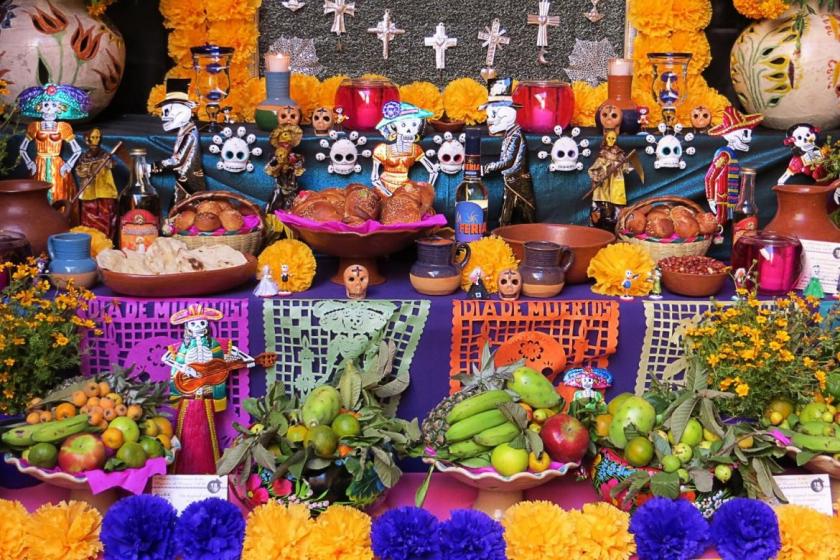The Waldorf School of Baltimore marks and honors an array of beautiful multi-cultural traditions; an essential part of our rich community life. This week we have been busy making our yearly preparations to celebrate Día de los Muertos.
Día de los Muertos, or Day of the Dead, is a celebration of life and death. While the holiday originated in Mexico, it is celebrated all over Latin America. Unique regional traditions (spicy rum in Haiti, baby-shaped bread in Ecuador) abound but all festivities have one thing in common—a joyful and rich celebration of those dearly departed. This is not a time of grief or mourning but a time for sharing funny stories about those who have passed, for eating your great-great-grandma’s favorite soup, for cleaning graves, for dancing in the streets.
Día de los Muertos, or Day of the Dead, typically begins on All Saints Day, the first day of November. Ofrendas display portraits, crosses, candles, flowers, incense, and water; a refreshment for the spirits who have made the long trip home from the hereafter. Markets in Mexico spill over with sugary candy, copal incense, pricked paper banners, and mountains of bread. Everywhere, everything is flooded with marigolds. While most festivities combine indigenous and Catholic traditions, the Mexican holiday predates Catholic influence, originating from ancient Aztec festivals that venerated gods like Mictēcacihuātl, the powerful lady of the dead. It is at it’ core a reaffirmation on ingenious life.
If there is one festival motif to El Dia De los Muertos it would be calacas and calaveras, skeletons and skulls. Children in skeleton face-paint chew sugary skull candy. Bone-shaped bread and skull maracas balance on tables between stacks of tiny ceramic skulls. Skull-shaped balloons are paraded through town behind costumed skeletons who dance their skeleton marionettes. The poems written for the festival are also called calavera (skulls), satirical little verses that joke to remind us that everyone, rich or poor, famous or unknown, is headed to the same fate—back to the soil, to bone, to ash.
Back in Baltimore, the Waldorf School celebrates this holiday with readings and crafts appropriate to each grade level. We create a collective altar where the students have the opportunity to display the photos of the loved ones. Each class is responsible for creating one part of the altar’s decorations (more on those contributions below) . After the Altar is set, each class is invited to visit the altar and share stories of their loved ones. We sing and recite poems acknowledging that this is a happy day of remembering those who have departed, and not a sad or scary day. We leave the altar with reverence.
First grade: Paper Lanterns Second Grade: Lanterns Third Grade: Calavera Masks Fourth Grade: Mola Fifth Grade: Calavera Garland Sixth Grade: Calavera Poems Seventh Grade: Paper Marigolds Eight Grade: Embossing MetalMany thanks for this contribution to Sra. Graciela Pasion
Would you like to learn more about the Waldorf School of Baltimore? Inquire today or join us for their next Waldorf 101, a 30-minute prospective parent zoom, held bimonthly.

